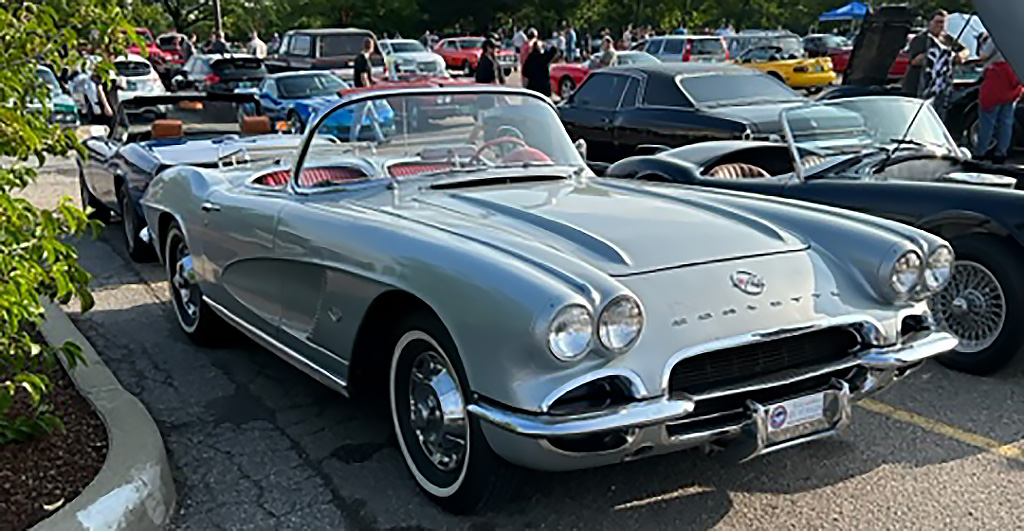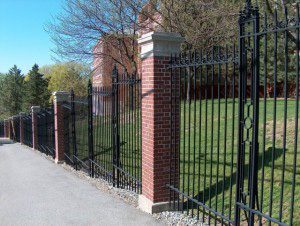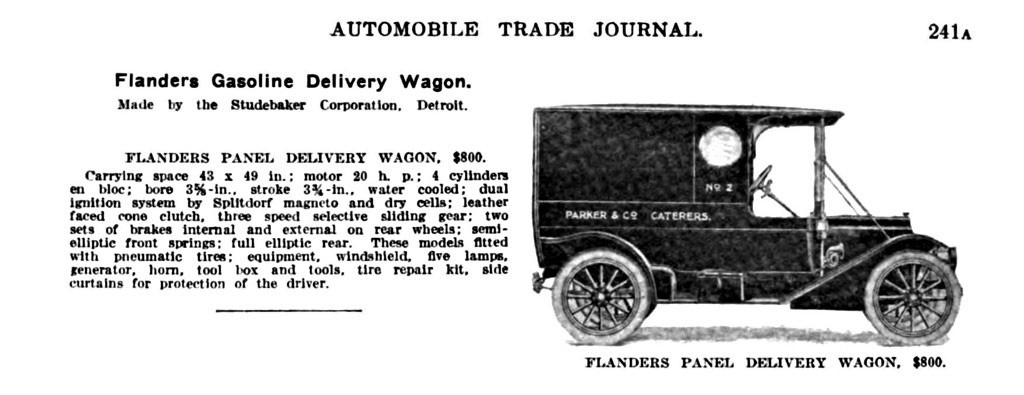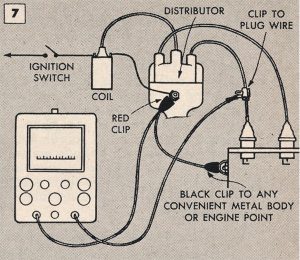Another great turnout the Cars and Coffee Vermont meet at Burlington’s University Mall!
Author: VAE
Cars and Coffee Middlebury – May 2023
Middlebury’s season opener Cars and Coffee at the A&W had a great turnout!
After Cars & Coffee Tour – May 2023
After the May 20, 2023 Vermont Cars & Coffee gathering in Burlington, we went on a cruise and visited The Residence at Quarry Hill and The Residence at Shelburne Bay (pictured), as well as the Whitney Hill Homestead.
Cars & Coffee Vermont – May 2023
Pics from the May Cars and Coffee gathering at the University all in Burlington, Vermont.
1926 Ford Model T Speedster
There is a new “muscle car” in town and hang-on Lucy if you want to race!
This Ford Model T Speedster is the creation of VAEer, Dennis Dodd of East Fairfield, Vermont. Dennis has the Patience of Jobe, as this #7 is his 2nd version of the same speedster and has just recently exited his garage, complete and ready to run. He had completed his project a number of years ago but was not happy with the result, so, some 14 months ago, he started over. You have to admit, the car is stunning!
In the days of old, these Model T Speedsters were built with three transmissions and a more powerful engine and could race at 90 to 100 MPH. This “Number Seven” is built for only 50 to 52 MPH………
Number Seven is built on a 1926 platform and the same year engine. The engine has “60-over” pistons with a “domed-head” and a “3-needle” carburetor. The horse power has increased from 22 to around 32HP.

Dennis has added a Warford truck transmission which is inline with the original T transmission and gives him five gears forward. The truck model allows both “under-drive” and an “over-drive” gear ratios. He spoke about the folks who drive speedsters with three transmissions and how difficult it is to remember the shifting sequences. The wrong shift usually leaves parts on the road behind you. His 2-transmission combo, is a bit easier, although it takes practice to shift on the fly successfully.
Dennis is the fabricator and quality control part of the organization and his wife Linda is the aesthetics-control person. The car did not leave the garage until she approved the public ready-ness. Linda also had to push the speedster project along as her bug-eyed Sprite is next in-line……she hopes.
The “number-7 Speedster will be at the Shelburne Show this June and hopefully at our August show in Waterbury.
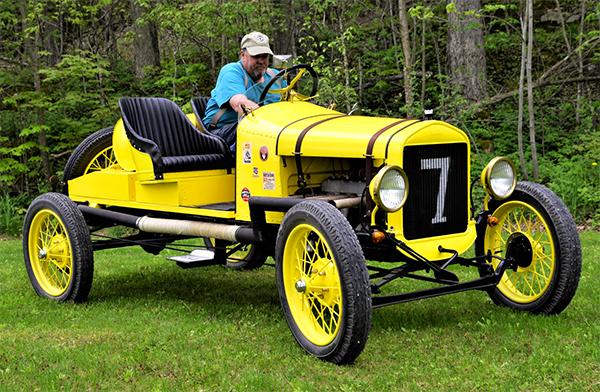
The 12,806 Mile Quest for Old Cars by a couple of VAEers….
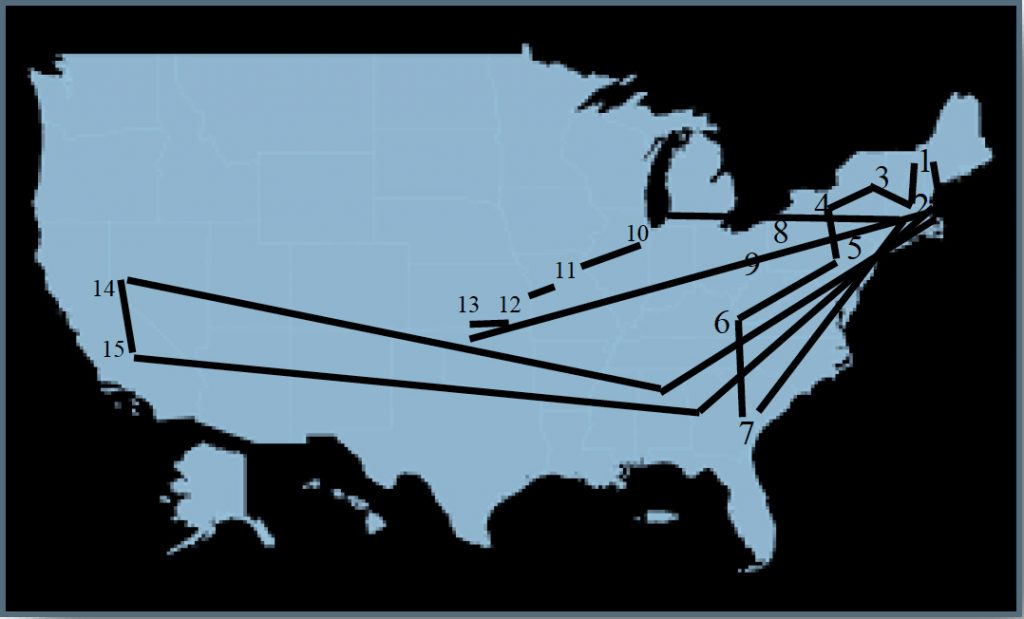
Gary Olney and Vin Cassidy have “the old car syndrome” that most of us have. Our level might be called a “melody”, theirs might be called a “fever level”….just an opinion, mind you.
Here is an attempt to track their travels that took place in about a period of one month. Please excuse us if this sounds like envy.
#1…Gary leaves his home in Derby Line the first part of March to meet Vin in Rowley, Massachusetts (2). They are heading out early because a snow storm is heading in and they need to be in New Jersey (3) to meet Fred Hock and check out all his Mercers.
Then off to Mitch Gross’s garage in New York (4). Mitch is in a deadline race to finish his White steam car and get it on a ship bound for China. The steam car will be the first to do the 9300 mile Peking to Paris race, that will be taking place this June to August. You can watch the race progress on the internet.
Then, off to Richmond, Virginia (5) and Reggie Nash’s Nash collection. The truck/tractor museum in Southern Virginia was next. A needed break for sleep happened in Kingsland, Georgia (6) then on to Amelia Island in Florida (7) and their big annual auction. A couple of $800,000 old cars sold and a couple of others for only one million and oh, did we say the two VAEers are pulling a trailer? The trailer was handy when someone asked if they could haul a 1906 Pope Toledo back to New Jersey. So the two, head back to New Jersey (3) for the delivery and back to Rowley (2).
In Rowley (2), they load the trailer up for the Chickasha show and head for a stop in Buffalo, New York (8) and Pittsburgh, PA. (9) for a ‘few car-parts purchases” of the show. Next, a sleep-over in Perrysburg, OH (10) and then on to St. Roberts, MO (11) and Edmond, OK (12) for a few more purchases. And….finally their destination, Chickasha, Oklahoma for the Annual Spring pre-war show and parts sale (13) Sadly, next year is the last Chickasha Swap Meet. A spring shackle breaks and the trailer is stopped in its tracks. Along comes a gent by the name of Ryan Ersland from the swap meet. A welder is produced, the repairs are made and they are on the way again. Ryan would not accept proper payment for his work because “he will not take advantage of someone broken down”. Vin and Gary both agree there are really good people everywhere in this world.
There were a few more stops over the next three days before arriving back in Rowley , Mass. (2). The end of their east-coast motoring….but there is still a little more….they were not done yet!
They got on an airplane and headed for another car show and swap meet in Bakersfield, California (14). There was also a ‘luxury break’ in Hermosa Beach (15) to view the pacific and remove some road-dust. They then went home to their respective homes,……and they were done! All 12,806 miles contained antique cars and parts that were picked up and delivered all over the United States that only Vin and Gary can keep track of. Can you imagine the stories that can be published from these adventure; maybe if we had 100 more pages!
25th Anniversary Milestone
Anne was unavailable this month for her column, so instead, we have gone back in the Wheel Tracks archives to the 1980s. Enjoys……
Al Ward’s 1982 “25th Anniversary Milestone” Poem.
Some 25 years ago at a lovely place called Stowe
Stood five old cars pushed all in a row.
The occasion of which was a picnic, I’m told.
And started the VAE as a club to take hold.
Each year we have prospered under super direction
Now each gathering held in close perfection.
Our meets take place in august as we all know
And features flea markets and a wonder show.
The town is jam packed with enthusiasts galore
Who arrive from Canada and the New England shore.
They keep coming back year after year
To take part in the show and give us a cheer.
Who would have thought that from such a small start
This club would have grown and we all could take part.
In putting on tours and sponsoring meets
Or just milling around while munching on sweets.
Over the years, the scenes have change
The designs of the cars have greatly ranged.
At first they were mostly all in the teens
But now it’s the fifties and in-be-tweens.
The success of our club is due in part
To those dedicated few who gave it a start.
And also to those who have carried on,
Through there 25 years we look back upon.
And now on the anniversary of our very small start
It give us great pleasure and comes from the heart
To thank all those who through these glorious years
Are most deserving and have earned these three cheers.
Cheer, cheer, cheer!
1980 Glidden Tour with, 1929 Silver Annie
“She’s not much to look at” by Cliff French
After being on the 1968 Glidden Tour in Pocono, Penn., I wanted to go again in 1980 in the White Mountains. I pulled the motor out, and out of 4 motors, took the best of each and made a motor that sounds like a bucket of bolts. This motor runs nice and uses no oil. With a 1927 Marvel brass carburetor, I get 14 miles to a gallon of gas.
I was accepted on the 1980 Tour with number 67 out of 341.
Esther and I left Bradford in the rain, September 14th, arriving in Brenton Woods at the Mt. Washington House about 3:30PM. We were to stay across the road at the Bretton Woods Motor Inn. We spent the rest of the day visiting and admiring the other many cars arriving, coming from across the United States and Canada.
Editor’s notes…. Taken from the 1981 Spring issue of Wheel Tracks. Cliff’s column goes on describing their eight days on the tour. We do not have the room to print the complete article but if you make a request, we will mail it to you.
Cliff ends his column with this…….
When I saw and heard about the many fine cars that threw rods, clutches and rear ends, to name a few, it made me feel good that Silver Anne made the 775 miles and the only problem was a leaky manifold gasket.
1911 Flanders Roadster Banner
The Shelburne Museum/VAE Father’s Day Auto Festival Award…..
Most Original (Unrestored ): 1910 Flanders, owned by Vin Cassidy
 Vin Cassidy, pictured left, has had the Flanders for a number of years. Wheel Tracks understands that Vin found the chassis and running gear in Massachusetts from Carl Weber. The body was found in Iowa some seven years ago.
Vin Cassidy, pictured left, has had the Flanders for a number of years. Wheel Tracks understands that Vin found the chassis and running gear in Massachusetts from Carl Weber. The body was found in Iowa some seven years ago.
Vin and his family own Cassidy Bros. Forge in Rowley, Mass. where they create some of the most amazing work you can fine. Just one example is pictured here. One of the company’s long-time employees is Al Murphy and it is also Wheel Tracks understanding that Al was the main person who put all the Flanders parts and pieces together to make what you see here.
The Flanders Automobile Company was around for only three years, from 1910 to 1913, while 31,514 vehicles were built. The Flanders name comes from Walter E. Flanders (1871–1923) born March 4 in Rutland, Vermont. He was educated in Vermont and left school as a teenager to begin working as a mechanic and machinist. In 1905 he obtained a contract to produce 5,000 crankcases for Henry Ford, which lead him to a production manager job at Ford for two years. Flanders left Ford in 1908 to co-found the E-M-F Company. “E” for Barney Everitt, “M” for William Metzger for “F” for Walter Flanders. EMF autos were built from 1909 to 1912 and during the three years 49,807 vehicles were built.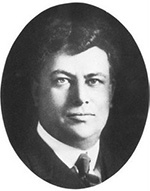
Flanders died in Newport News, Virginia and is buried at Williamsburg Memorial Park in Williamsburg.
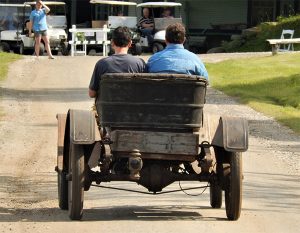 Vin Cassidy’s Flanders has a 4-cylinder L-head engine that produces 20.3 hp and was sold for $750.00 when new. The engine has two main bearings with a splash lubrication system and a 2-speed “progressive “ transmission with cone clutch. The tires are 32X3. It is called a Series 20 Runabout and weighs about 1200 pounds with a wheel base of 100 inches.
Vin Cassidy’s Flanders has a 4-cylinder L-head engine that produces 20.3 hp and was sold for $750.00 when new. The engine has two main bearings with a splash lubrication system and a 2-speed “progressive “ transmission with cone clutch. The tires are 32X3. It is called a Series 20 Runabout and weighs about 1200 pounds with a wheel base of 100 inches.
The little car was a multi-purpose vehicle, performing duties as a passenger transporter and a delivery vehicle. The body section could be removed and replaced with a slip-on fully enclosed salesman’s body. This made it very practical for all situations.
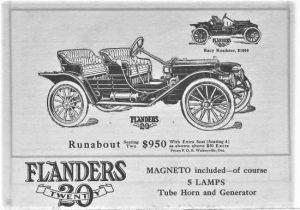 The picture left is from a 1911 advertisement.
The picture left is from a 1911 advertisement.
The ad below claims the delivery wagon has a carrying space of 43 by 49 inches and is built by Studebaker. The Studebaker company distributed the Flanders automobile nation wide and eventually purchased the complete Flanders Motorcar Company.
Your Car Engine on an Oscilloscope
Guest mechanic this month started with an article from Ken Barber and finished by Wheel Tracks
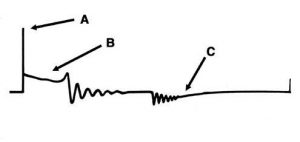 When an oscilloscope is used by a mechanic to tune your engine, the picture to the left is what one good cylinder looks like during one firing cycle.
When an oscilloscope is used by a mechanic to tune your engine, the picture to the left is what one good cylinder looks like during one firing cycle.
An oscilloscope allows you to see the voltage pattern of anything that uses voltage. They were first developed in 1932 and can be great for tuning your old car, even if your car is a 1901 vehicle.
The pattern to the left tells you how well your equipment is working, that produces the spark that explodes the fuel in your cylinders, that gives you car the power to drive down the road.
A…. Indicates the level of voltage the coil produces to make the spark at your plug. That little flat part just below and to the left of ’A’ is the moment your points close.
B…. Is called the “Spark Line” where if working properly as in this picture, should decrease in a smooth action to zero. The little wiggles to the right of ’B’ is the final remnants of the spark being absorbed by your condenser. When this does not happen, people radios and tvs get lots of interference, plus your engine can not be properly ready to begin its next firing cycle.
D… This show when the points close to allow voltage back to your coil and be ready to make the next 25,000 volt spark. That little oscillation between D and C is normal and show the voltage settling down while your coil initially starts it’s recharge.
The distance between D and E is called Dwell and is simply the time adjustment for your points to be closed allowing voltage to your coil.
The distance between A and E is simply a time period that one cylinder needs during one cycle. During that one cycle, four things happen.
- The gas and air mixture explodes from the spark at the plug.
- The exhaust is pushed out the exhaust pipe.
- The next mixture of gas and air is pulled into the cylinder.
- Then it is all compressed to be ready for the next big spark.
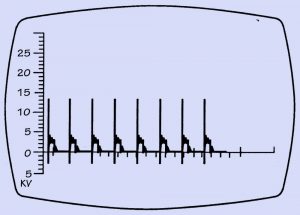 The picture on the left shows an 8 cylinder engine, all cylinders doing what they are supposed to be doing with the spark plugs firing with 14,000 volts. If a mechanic sees the 3rd vertical lines at, say, 5,000 volts, then he might pull the spark plug from #3 cylinder to see if it is defective.
The picture on the left shows an 8 cylinder engine, all cylinders doing what they are supposed to be doing with the spark plugs firing with 14,000 volts. If a mechanic sees the 3rd vertical lines at, say, 5,000 volts, then he might pull the spark plug from #3 cylinder to see if it is defective.
If the little condenser oscillation is not there like we can see between B and D above, the mechanic can suspect a bad condenser.
On the right is a normal set-up for connecting a scope to your engine.
Scopes are inexpensive these days and you should not let yourself get duped into thinking this is complicated… it is not. The more you use it and the more you see the patterns, the easier it is to find problems and make your engine run as smooth as possible.
A scope can even be used in one-lungers, so hit Napas and ask some questions.
Photos from the Great American Race
The ladies have this month off – enjoy our pictures…










